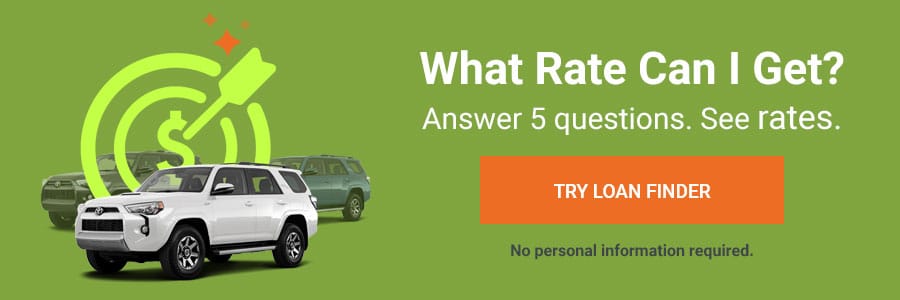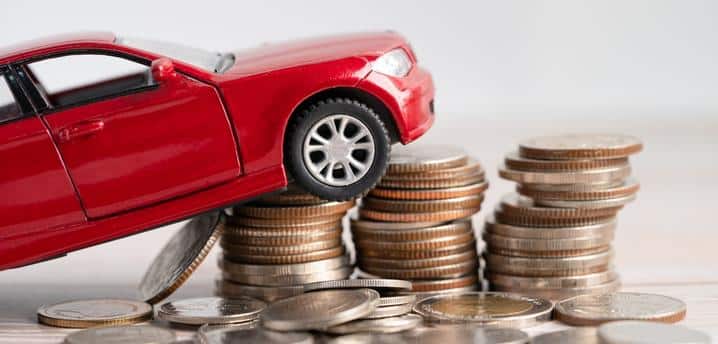In a tough financial situation and need to lower your car payment? Here are tips that might help.
With inflation in the United States reaching a 9.10% annual rate in June, it’s no wonder that so many people are struggling to keep up with their payments. New-car payments average $644 per month, and used-car payments average $488 per month. Keeping up with your car payments in this climate can be frustrating.
You might feel like you’re stuck, and there’s nothing you can do about it. But that’s not true! There are many ways to help ease your financial burden. So, if you’re feeling overwhelmed by your car payment, don’t worry — we’ve got you covered with some of the best strategies for reducing it.
How Do Car Loans Work?
As its name suggests, a car loan is a type of loan used to finance the purchase of a vehicle. The loan is typically repaid over a period of time, typically 72 months or less.
Car loans are secured loans, which means that the car itself serves as collateral for the loan. That way, if you can’t make your payments, the lender can repossess your car and sell it to recoup their losses.
To qualify for a car loan, you’ll typically need good credit and a steady income. The loan amount will depend on your credit history, income, and the value of the vehicle you’re purchasing. Once you’ve been approved for a car loan and purchased your car, you’ll start making monthly payments to the lender for the duration of the loan term.
These payments will include interest and principal, which will be applied to the loan balance. When the loan is paid off, you can own the vehicle outright.
Top 6 Ways to Fix a High Car Payment
So, what happens once you’ve signed for a car loan but find that the monthly payments are too high? Fortunately, there are six strategies you can use to lower your car payment and help you pay off your debt faster.
1. Consider refinancing your car loan
When you refinance your vehicle, you essentially take out a new loan to pay off your existing auto loan. This process can be beneficial if you qualify for a lower interest rate or if you want to extend the terms of your loan to lower your monthly payments.
You’ll need good credit history and a consistent source of income to qualify for refinancing. Once you’ve been approved for refinancing, the new lender will pay off your old loan, and you can begin making payments on the new loan.
If you don’t want to extend the term of your loan, you might be able to refinance for a lower interest rate and keep the same repayment schedule. You can also make a down payment to help lower your monthly payment. When done correctly, refinancing can save money on your monthly payments and help you pay off your vehicle sooner.
It’s essential to check with multiple lenders before refinancing to make sure you are getting the best deal possible. You can use an online auto loan calculator to compare rates and terms from different lenders.
2. Work with your current auto loan provider
If you’re unable to refinance your loan, it might be worthwhile to speak with your current auto loan provider. Sometimes, they could be willing to work with you to lower your monthly payments. This could involve extending the term of your loan or offering delayed payment options. For example, if you’re experiencing financial hardship, your lender might be willing to defer one or two payments.
It’s important to note that when you extend the term of your loan, you’ll end up paying more interest over time. But if lowering your monthly payment is your top priority, this could be a good option to make ends meet in the short term.
3. Work on building your credit
If you’re struggling to make car payments, it might be time to look at your credit score. If you want to refinance, a bad credit score can lead to higher interest rates. But don’t worry. There are plenty of ways to improve your credit score:
- Pay your bills on time: Your payment history accounts for 35% of your credit score. So, make sure you’re paying all of your bills on time and in full each month.
- Keep balances low: Another factor lenders look at is your credit utilization — how much of your available credit you’re using. So, even if you have a high limit on your credit card, carrying a balance close to that limit can hurt your score. Experts recommend keeping your balances below 30% of your limit.
- Check for errors: Sometimes, your credit scores can drop by no fault of your own — like an incorrect late payment being reported on your account. If you spot an error on your credit report, dispute it with the relevant credit bureau immediately to repair your credit.
After you’ve improved your credit score, you can also try renegotiating your car loan interest rate with your lender. Though they’re not obligated to make any changes, it never hurts to ask.
4. Trade in your car for a lower-priced vehicle
The process of trading in your car is relatively simple. You bring your car to a dealership, and they evaluate it to determine its value. This value is then applied toward the purchase of a new, lower-priced car. In most cases, you’ll still need to finance the difference between the trade-in value and the price of the new vehicle. But this can result in significant savings compared to continuing to make payments on your current vehicle.
If you struggle to keep up with your car payments, trading in your car for a lower-priced vehicle might be a good option. Remember that you will need to qualify for financing on the new car, but the savings can be pretty big. Be sure to talk to your local dealership about this option and see if it’s right for you.
5. Sell your vehicle to someone else
If you find that you don’t use your vehicle enough to warrant paying for it each month, selling it to someone else could be a good option. In some cases, you might even be able to sell your car for more than you owe on the loan, which can give you an extra chunk of change to put toward a new vehicle.
There are a few things to keep in mind when you’re selling your car. First, be sure to have all the necessary paperwork in order. This includes the title to the vehicle, as well as any registration, or insurance documents.
You’ll also need to have a Bill of Sale outlining the terms of the sale, including the purchase price and other relevant details. Once you have everything in order, you can start negotiating with the buyer and finalize the sale agreement.
Selling your car to someone you know can be a quick and easy way to get rid of an old vehicle, but it’s essential to do your research beforehand to avoid headaches down the road.
6. Lease a car instead of buying it outright
If your car payment is too high, you might want to consider leasing a car instead of buying it. With a lease, you only pay for the vehicle’s depreciation during the lease term, so your payment is typically lower. In other words, you’re only paying for a portion of the vehicle’s value instead of the full price.
So if you don’t mind not owning the car outright, leasing could be a great option. Plus, with a lease, you won’t have to worry much about repairs and maintenance since that’s typically covered by the leasing company.


What Happens if You Don’t Make Your Car Payments?
When you finance a car, you agree to make monthly payments to the lender for a set period of time. If you fall behind on your car payments, you typically have between 30 and 90 days before the lender begins the process of repossessing your car. Keep in mind that repossession laws are different in each state. In some states, lenders can legally repossess your car even if you’re only one day late on your payment.
Though not required, some lenders might send a notice informing you that your vehicle will be repossessed unless you take action. If you take no action, the lender will likely hire a repossession company to tow your vehicle away.
Of course, this whole ordeal will impact your credit score. Both late payments and vehicle repossession will appear as negative marks on your credit report. Not to mention, getting approved for another auto loan can be tough if you’ve just gone through a repo.
If you’re considering filing for bankruptcy to protect your car from repossession, you should also be aware of its long-term effects on your credit report. In addition to negatively impacting your credit score, a bankruptcy stays on your credit report for 7 to 10 years.
Take Action to Lower Your Car Payments
If you’re feeling the squeeze of those high monthly car payments, don’t despair. There’s good news: It’s never too late to try lowering your car payment to take some of the weight off your shoulders. Making even a small change to your car payment can free up some much-needed cash each month.
;)



